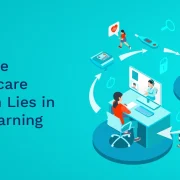On-the-Job Training (OJT) is a practical and effective method of employee training that occurs directly within the work environment. It involves learning by doing, where employees acquire new skills and knowledge while performing their regular job duties. OJT is a crucial component of workforce development, enabling businesses to cultivate skilled talent internally and improve overall productivity. This hands-on approach ensures that training is directly relevant to the job requirements and fosters a deeper understanding of practical application.
What is On-the-Job-Training (OJT)?
On-the-Job-Training (OJT) is a practical training method where employees learn the necessary skills and knowledge to perform their job duties while actively working within the real work environment. It’s a hands-on approach, contrasting with theoretical classroom-based learning.
Instead of lectures or simulations, OJT involves learning by doing. New employees, or those transitioning to new roles, are typically guided by experienced colleagues, supervisors, or designated trainers who provide direct instruction, mentorship, and feedback.
The process often begins with an explanation and demonstration of a task, followed by the trainee attempting the task under supervision. Corrective feedback is provided in real-time, allowing for immediate adjustments and improvements. As the trainee gains proficiency, the level of supervision gradually decreases, fostering independence and confidence.
OJT can be structured with a defined curriculum and specific learning objectives, or it can be more informal and ad-hoc, adapting to the specific needs of the employee and the job. It offers several advantages, including cost-effectiveness, immediate applicability of learned skills, and a tailored learning experience that directly reflects the demands of the job. Ultimately, OJT aims to equip employees with the practical skills and knowledge necessary to excel in their roles and contribute effectively to the organization.
Why is On-the-Job Training (OJT) Important?
On-the-Job Training (OJT) is a cornerstone of effective workforce development, offering significant advantages for both employees and organizations. Its importance stems from its practical, hands-on approach to learning, directly within the work environment.
Firstly, OJT facilitates rapid skill acquisition. Employees learn by doing, immediately applying theoretical knowledge to real-world scenarios. This accelerated learning curve allows them to become productive contributors much faster than traditional training methods.
Secondly, OJT fosters improved employee engagement and retention. When companies invest in OJT, employees feel valued and supported, boosting morale and loyalty. The opportunity to develop skills and advance within the company creates a sense of purpose and long-term commitment.
Thirdly, OJT ensures relevance and practicality. Training is tailored to the specific needs of the job and the organization, ensuring that employees acquire the exact skills required to perform their duties effectively. This eliminates the gap between classroom learning and workplace application.
Fourthly, OJT promotes enhanced productivity and performance. As employees gain competence through hands-on experience, their efficiency and quality of work improve. This leads to increased output and better overall organizational performance.
Finally, OJT offers a cost-effective training solution. By leveraging existing resources and experienced employees as trainers, organizations can reduce training costs compared to external programs. This makes OJT an accessible and sustainable approach to workforce development, crucial for maintaining a competitive edge.
How Does On-the-Job-Training (OJT) Work?
On-the-Job-Training (OJT) is a practical, hands-on approach to employee development where learning occurs directly within the work environment. Instead of traditional classroom settings, employees gain skills and knowledge while performing their actual job duties. OJT programs are structured to integrate learning seamlessly into the daily workflow.
Here’s how OJT typically works:
- Needs Assessment: The process begins with identifying skill gaps and training needs within a specific job role or department. This ensures the OJT program addresses relevant skills.
- Designated Trainer/Mentor: An experienced employee, often a supervisor or senior team member, acts as a trainer or mentor. They possess the necessary expertise and communication skills to guide the trainee.
- Structured Learning Plan: A structured plan outlines the learning objectives, training modules, and performance expectations. This provides a clear roadmap for the trainee’s development.
- Practical Application: Trainees actively participate in real-world tasks, gradually increasing in complexity. They learn by doing, receiving immediate feedback and guidance from the trainer.
- Observation and Feedback: The trainer observes the trainee’s performance, providing regular feedback on strengths and areas for improvement. Constructive criticism helps the trainee refine their skills.
- Progress Monitoring: Regular assessments and evaluations track the trainee’s progress and ensure they are meeting the required standards. Adjustments to the training plan may be made based on performance.
- Documentation and Certification: Upon successful completion of the OJT program, the trainee receives documentation or certification recognizing their newly acquired skills.
OJT provides a highly relevant and cost-effective way to develop employee skills, directly impacting productivity and performance. By learning in the context of their actual work, employees can immediately apply their knowledge and contribute to the organization’s success.
On-the-Job Training (OJT) Examples: Leading Brands in Action
On-the-Job Training (OJT) is a powerful method for developing employee skills within the actual work environment. Leading brands across various industries leverage OJT to improve performance, reduce training costs, and ensure a seamless transition for new hires. Here are some examples:
Starbucks: Known for its exceptional customer service, Starbucks utilizes OJT extensively. New baristas undergo hands-on training, shadowing experienced employees and learning to prepare drinks, manage customer interactions, and operate equipment. This practical approach ensures consistency and quality across all locations.
Toyota: A pioneer in lean manufacturing, Toyota incorporates OJT into its continuous improvement strategy. Employees at all levels receive ongoing training directly on the production floor, learning to identify and solve problems, optimize workflows, and improve efficiency. This approach fosters a culture of learning and innovation.
Ritz-Carlton: Renowned for its impeccable service, Ritz-Carlton relies on OJT to instill its core values and service standards. New employees shadow seasoned professionals, observing and learning the art of anticipating and fulfilling guest needs. This immersive experience ensures a consistent and exceptional guest experience.
Google: While known for its innovative online training programs, Google also leverages OJT, especially in technical roles. New engineers often work alongside experienced developers on live projects, gaining practical skills and learning Google’s coding standards and development processes. This mentorship-based approach accelerates learning and integration.
General Electric (GE): GE uses OJT as a key component of its leadership development programs. High-potential employees are given challenging assignments and mentored by senior leaders, allowing them to develop their skills and gain experience in different areas of the business. This helps build a strong leadership pipeline.
These examples illustrate how leading brands use OJT to foster employee development, improve performance, and maintain a competitive edge. The common thread is the focus on practical, hands-on learning within the real-world context of the job.
Key Benefits of On-the-Job Training (OJT)
On-the-Job Training (OJT) offers numerous advantages for both employees and employers. By immersing trainees in the actual work environment, OJT fosters rapid skill development and a deeper understanding of company processes. Here are some key benefits:
- Enhanced Practical Skills: OJT allows employees to learn by doing, translating theoretical knowledge into practical application. This hands-on experience accelerates skill acquisition and improves proficiency.
- Improved Productivity: As trainees become more competent through OJT, their productivity increases, contributing directly to the company’s bottom line. They learn to perform tasks efficiently and effectively within the existing workflow.
- Cost-Effective Training Solution: Compared to off-site training programs, OJT minimizes expenses related to travel, accommodation, and external instructors. It utilizes existing resources and personnel, making it a budget-friendly option.
- Increased Employee Engagement: OJT demonstrates a company’s investment in its employees’ development, fostering a sense of value and increasing job satisfaction. Engaged employees are more motivated and loyal.
- Tailored Learning Experience: OJT can be customized to meet the specific needs of the trainee and the demands of the job. This personalized approach ensures that employees acquire the skills and knowledge most relevant to their roles.
- Faster Integration into the Workplace: OJT accelerates the onboarding process, allowing new employees to quickly integrate into their teams and contribute to organizational goals. They learn the company culture and build relationships with colleagues.
- Real-Time Feedback and Coaching: Trainees receive immediate feedback from experienced colleagues and supervisors, enabling them to identify areas for improvement and refine their skills in real-time. This constant guidance ensures continuous learning and development.
- Reduced Learning Curve: By learning within the context of their actual jobs, employees experience a significantly reduced learning curve compared to traditional training methods. They can immediately apply their knowledge and overcome challenges with the support of their colleagues.
In conclusion, On-the-Job Training is a powerful tool for developing a skilled and engaged workforce, offering a cost-effective and practical approach to employee development.
Common Misconceptions Around On-the-Job Training (OJT)
On-the-Job Training (OJT) is often misunderstood, leading to ineffective implementation and unrealized potential. Let’s debunk some common misconceptions:
Misconception 1: OJT is only for unskilled labor. While OJT is valuable for basic skills, it’s equally effective for developing specialized expertise in complex roles. Many organizations successfully use OJT for management training, technical certifications, and leadership development.
Misconception 2: OJT is just shadowing. True OJT involves structured learning, active participation, and feedback. Shadowing alone lacks the guided practice and knowledge transfer crucial for skill acquisition. Effective OJT includes defined learning objectives, hands-on tasks, and opportunities for trainees to demonstrate competence.
Misconception 3: Anyone can be an OJT trainer. Effective OJT requires skilled trainers who possess not only expertise in the subject matter but also the ability to teach and mentor. Trainers need strong communication, patience, and the ability to provide constructive feedback. Proper trainer selection and training are critical for OJT success.
Misconception 4: OJT is unstructured and informal. While flexibility is a benefit, a lack of structure undermines OJT’s effectiveness. A well-designed OJT program includes a defined curriculum, clear performance standards, and regular assessments. This ensures consistent training and measurable outcomes.
Misconception 5: OJT is a cost-cutting measure. While OJT can be cost-effective compared to formal training programs, it requires investment in trainer time, resources, and program development. Viewing OJT solely as a cost-saving strategy often leads to inadequate planning and poor results. Instead, consider OJT as a strategic investment in employee development that yields long-term benefits.
By addressing these misconceptions, organizations can harness the full potential of OJT to build a skilled and adaptable workforce.




